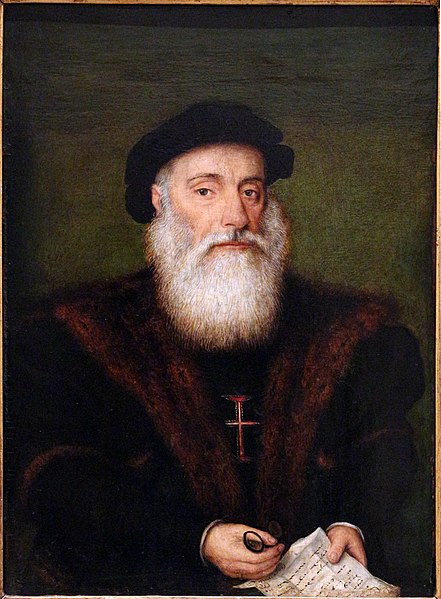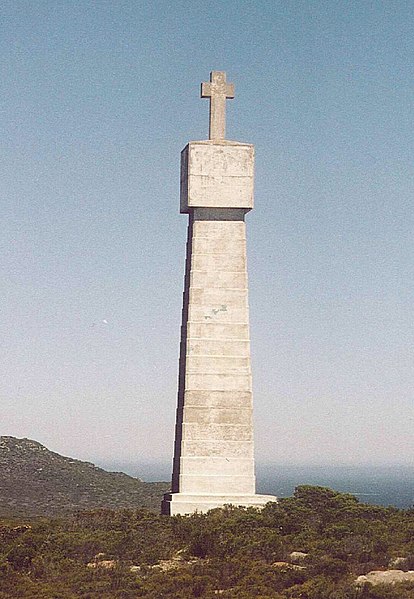Portuguese discovery of the sea route to India
The Portuguese discovery of the sea route to India was the first recorded trip directly from Europe to the Indian subcontinent, via the Cape of Good Hope. Under the command of Portuguese explorer Vasco da Gama, it was undertaken during the reign of King Manuel I in 1495–1499. Considered one of the most remarkable voyages of the Age of Discovery, it initiated the Portuguese maritime trade at Fort Cochin and other parts of the Indian Ocean, the military presence and settlements of the Portuguese in Goa and Bombay.
Vasco da Gama on his arrival in India in May 1498, bearing the flag used during the first voyage by sea to this part of the world: the arms of Portugal and the Cross of the Order of Christ, sponsors of the expansion movement initiated by Henry the Navigator, are seen. Painting by Ernesto Casanova
Preste João (Prester John) by Diogo Homem, 1558, in the Biblioteca Britânica
The important trade routes of the silk and spices, blocked by the Ottoman Empire in 1453 with the fall of Constantinople and the Byzantine Empire, led to the search for a sea route across the Atlantic skirting Africa.
Vasco da Gama presents to Dom Manuel the first fruits of India. National Library of Portugal, c. 1900
Vasco da Gama, 1st Count of Vidigueira, was a Portuguese explorer and the first European to reach India by sea.
Anonymous portrait, c. 1525
Bronze statue of Vasco da Gama at his birthplace, Sines, Portugal
Vasco da Gama leaving the port of Lisbon, Portugal
Monument to the Cross of Vasco da Gama at the Cape of Good Hope, South Africa








